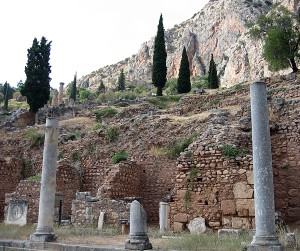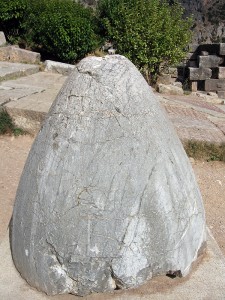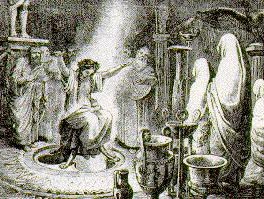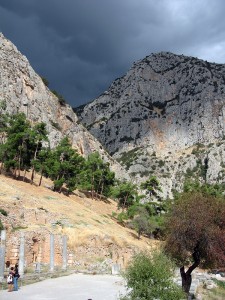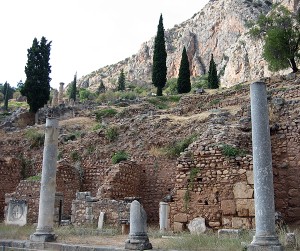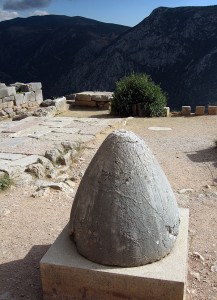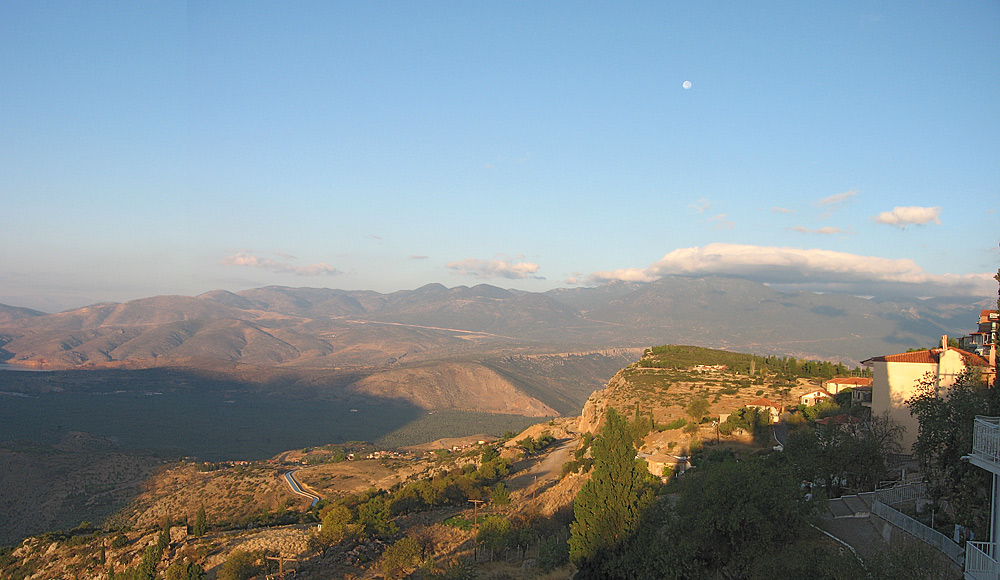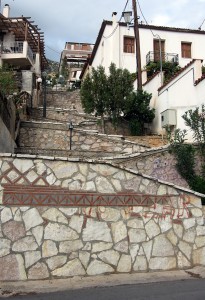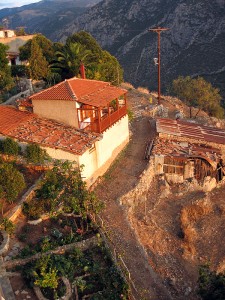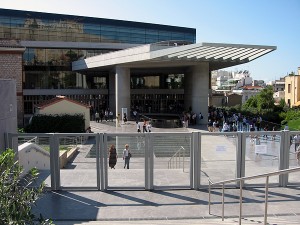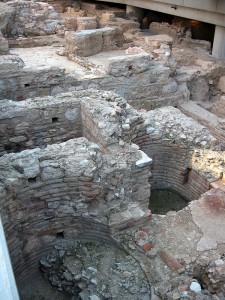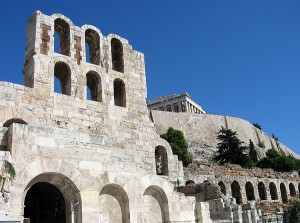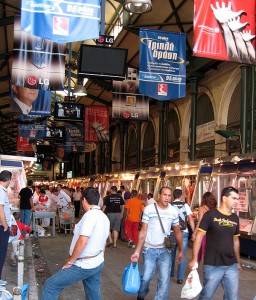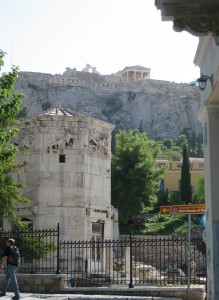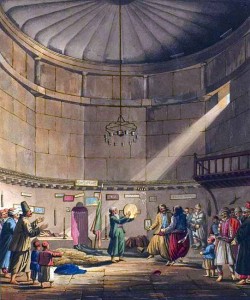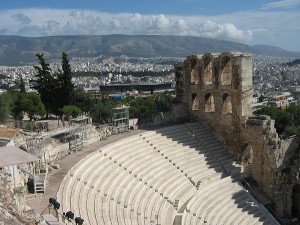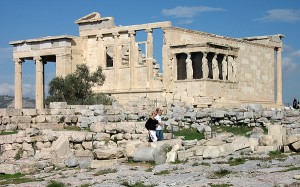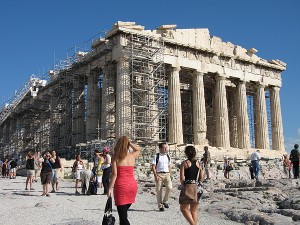On my first morning in Delphi, I woke up just as the sun was rising. Stepping out onto my little terrace, I saw a ghostly moon hanging above the valley and rays of sunlight touching the hills and olive groves below. Everywhere birds were calling out and singing their morning songs.
After breakfast at the hotel, I headed straight for the Sanctuary. I met few people along the way, but as I neared the site, I saw at least a half dozen tour buses and I knew it would be challenging to keep my focus in the midst of the crowds. I kept hearing ‘OMPHALOS, OMPHALOS’ in my head as I walked past the tour groups that had stopped along the Sacred Way to listen to lectures. Quickening my pace, I hoped they would be distracted long enough for me to have a few moments alone with the ancient stone.
Standing with my back to the crowds, I held my hands about eight inches away from the stone’s surface, one on each side. Starting at the center, I felt an unmistakable throbbing sensation in both hands. Moving my hands up to the top, I felt nothing. Back toward the center, the pulsations began again. Then, squatting down, I held my hands near the bottom. Nothing.
I wanted to find a place nearby to sit and absorb these strange vibrations, but the crowds were advancing so I moved off and sat down on a rock where I could gaze at the pillars that once formed the entrance to the Temple of Apollo.
A group of seniors with an English-speaking tour guide stopped directly in front of me. Talking about the Temple as the place where the Oracle delivered her prophesies, she claimed that the Pythia, sequestered behind a curtain, did nothing more than moan and rant while the priests who had taken questions from the supplicants, would ‘interpret’ her hysterical incantations. According to the guide, the priests continually gathered knowledge of politics and worldly affairs from the pilgrims who passed through Delphi; she gave little, if any credit to the Oracle.
I wondered where she had found her information. From my research, I understood that the priests at Delphi did, in fact, play a pivotal role in deciphering the Oracle’s prognostications. But from studying illustrations of the Oracle while in trance delivering her prophecies and from reading about these sessions, I hadn’t come across any indication of a screen or curtain separating her and her audience. And with Socrates, Plato, and Aristotle among the Pythia’s fans, it was hard to imagine that such a fraud could have been perpetuated successfully over the course of 1,200 years.
As the group moved on, my attention was drawn back to the Omphalos. I thought how strange it was to feel such a connection with this other-worldly object. But maybe it wasn’t so strange. In her book Messages from Spirit: The Extraordinary Power of Oracles, Omens, and Signs, spiritual intuitive Colette Baron-Reid talks about rocks as sacred sign-bearers. According to Reid, rocks and stones have life-force energy even though they’re inanimate. And as part of the metaphorical language of Spirit, they represent looking into the past for knowledge.
Well, that pretty much summed up my goal for this journey. The problem was that as hard as I looked, I didn’t seem to be any closer to finding my past. Maybe trying harder wasn’t going to elicit a response from Source after all.

